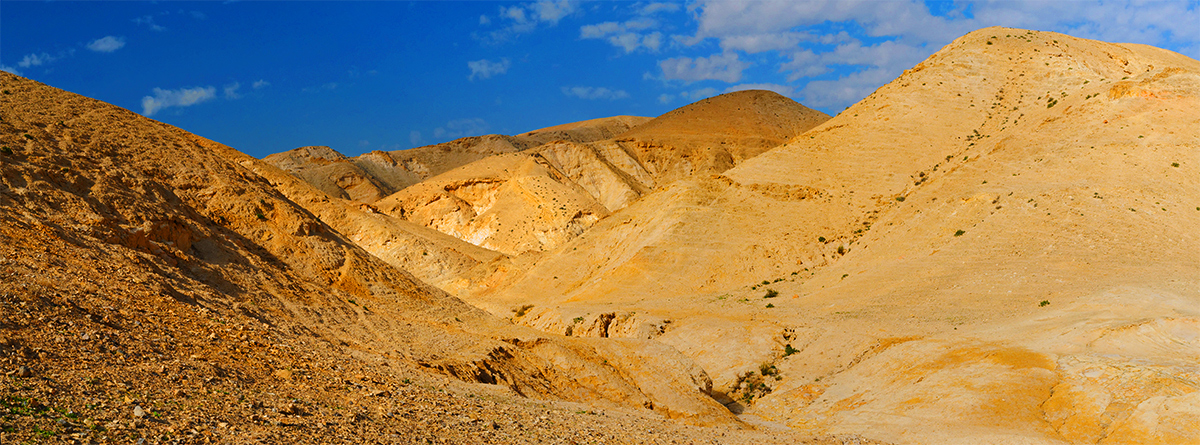Where Did the “Good” in Good Samaritan Come From? or, Who is my Neighbor?

The Dead Sea, Israel
The Dead Sea is just over a dozen miles away from Jerusalem. Descending 4000-feet from about 2700-feet above sea level, to 1300-feet below sea level, the ancient road to Jericho was rather desolate. However, it was the road traveled by temple priests who lived in Levite Jericho, serving in Jerusalem’s temple. In those days, travel was about a day’s journey, and they included animals in their caravans. Caravans were regularly used for defense against highway robbers.
Special travel rules of cleanliness applied to the priests who had to remain “unblemished” to serve in the holy temple. Staying away from any decay or waste matter, they also kept a specific distance away from anything dead (except the temple sacrifices). “Whosoever toucheth . . . a dead body . . . or a grave, shall be unclean.” (Numbers 19:16) It is still a custom among Levites and Cohens to circumvent graveyards or any place where there is death.
The road from Jerusalem to Jericho

Desert in Israel
On the road from Jerusalem to Jericho, an old inn has been restored to represent a New Testament parable Jesus told. Modern Christians call it the “Good Samaritan Inn.” The truth is that Jesus never used the term “good” Samaritan. Let’s take a closer look . . . A lawyer, challenged Jesus, the Lawgiver: “What shall I do to inherit eternal life?” (Luke 10:25) Jesus, who studied the law, (He is the lawgiver, our advocate), responded to the challenging lawyer, with a question, “What is written in the law? how readest Thou?” (Luke 10:26) Showing his own legal acumen, the lawyer recited the first law of loving God and neighbor, but challenged Jesus to a legal definition, “Who is my neighbor?” (Luke 10:29) The Savior then related the parable, including priests and a non-Jewish Samaritan. Nowadays, Jews don’t use the term “good” Samaritan, it has anti-Semitic implications of “bad” Jews. You’ll hear some say that Jesus was an anti-Semite, “Even when Jesus made up a story he portrayed the Jews as bad guys and the non-Jew as the good guy.”
Jesus had no intention of portraying Jews as uncompassionate. In His story, He’s making a legal point, the priest and the Levite were within legal rights – not to be defiled by being too close to the dead, and rather than take a chance, they walked on the other side. Their lack of action was strictly legal, but missed the higher law of compassion, governed by the spirit not the letter of the law. Talmudic commentary written hundreds of years later, adds an additional guideline, “As a sign of respect, Levites, or Cohens, are required to bury the dead if they chance upon a cadaver.”
Removing “good” from “good Samaritan”
In developing true forgiveness, understanding and childlike faith, and truly be a neighbor, we might also consider removing the “good” from the “good Samaritan,” thereby removing the inferred “bad” from the Jews in the story. All three were good in their own perceptions. However, the Levite and the Priest missed the point of a higher law–governed by the spirit. That also doesn’t mean the lesser law, governed-by the letter of the law, is bad; and those who ardently attempt to keep it are thereby bad as well.
As an example, for us, the Savior’s compassion for all of God’s children raise us much higher, inspires us, to ask, “May I be your neighbor?”

